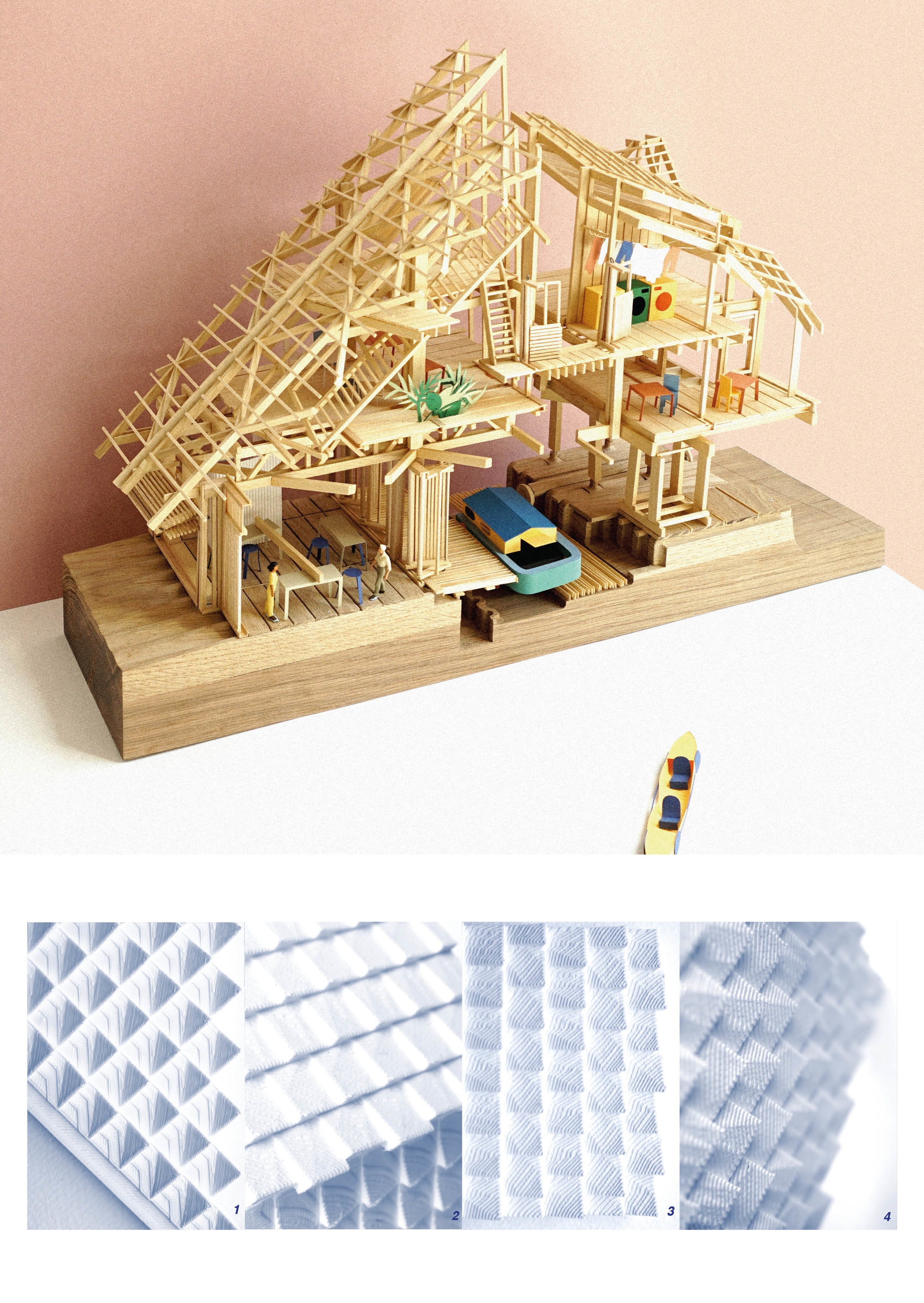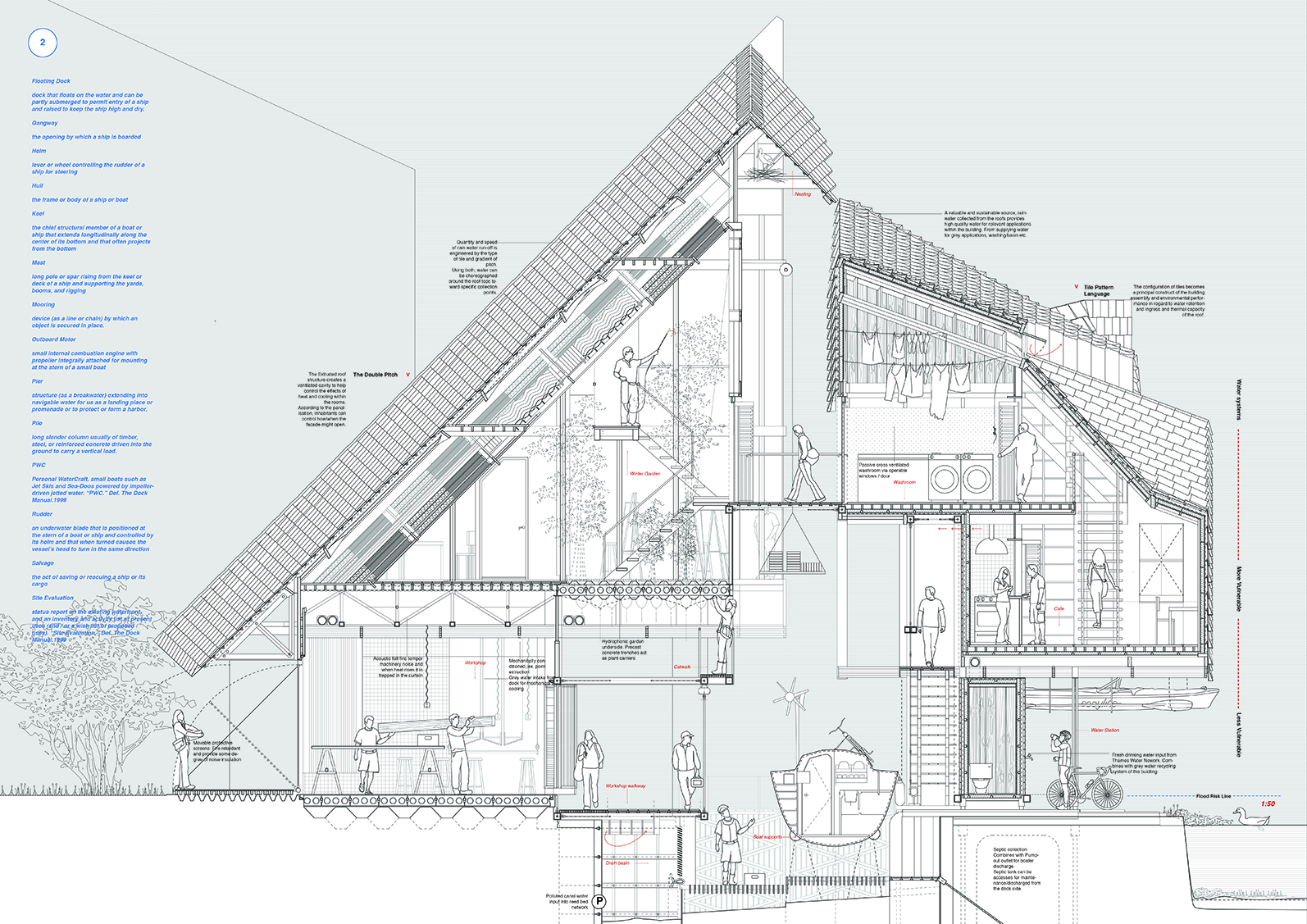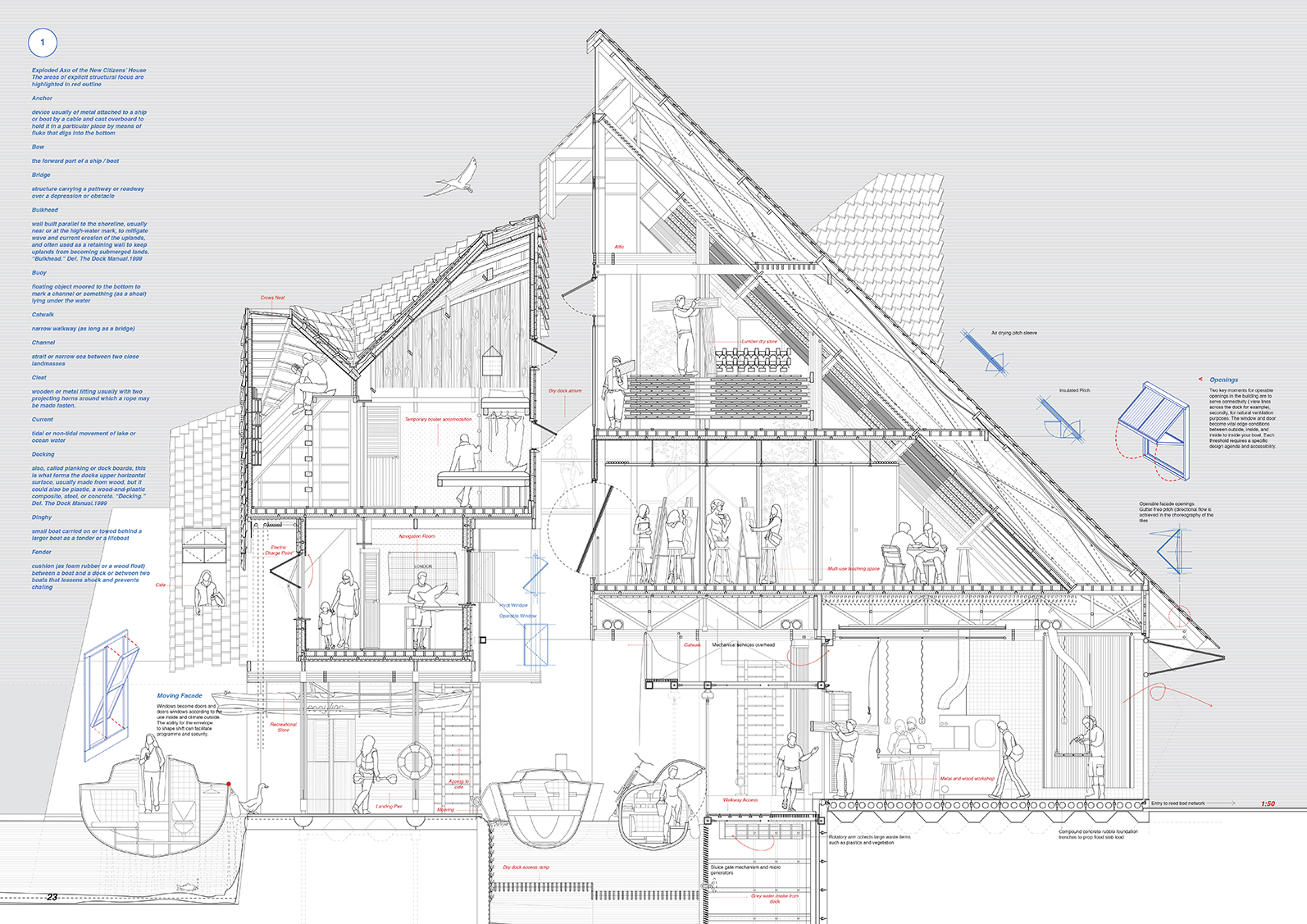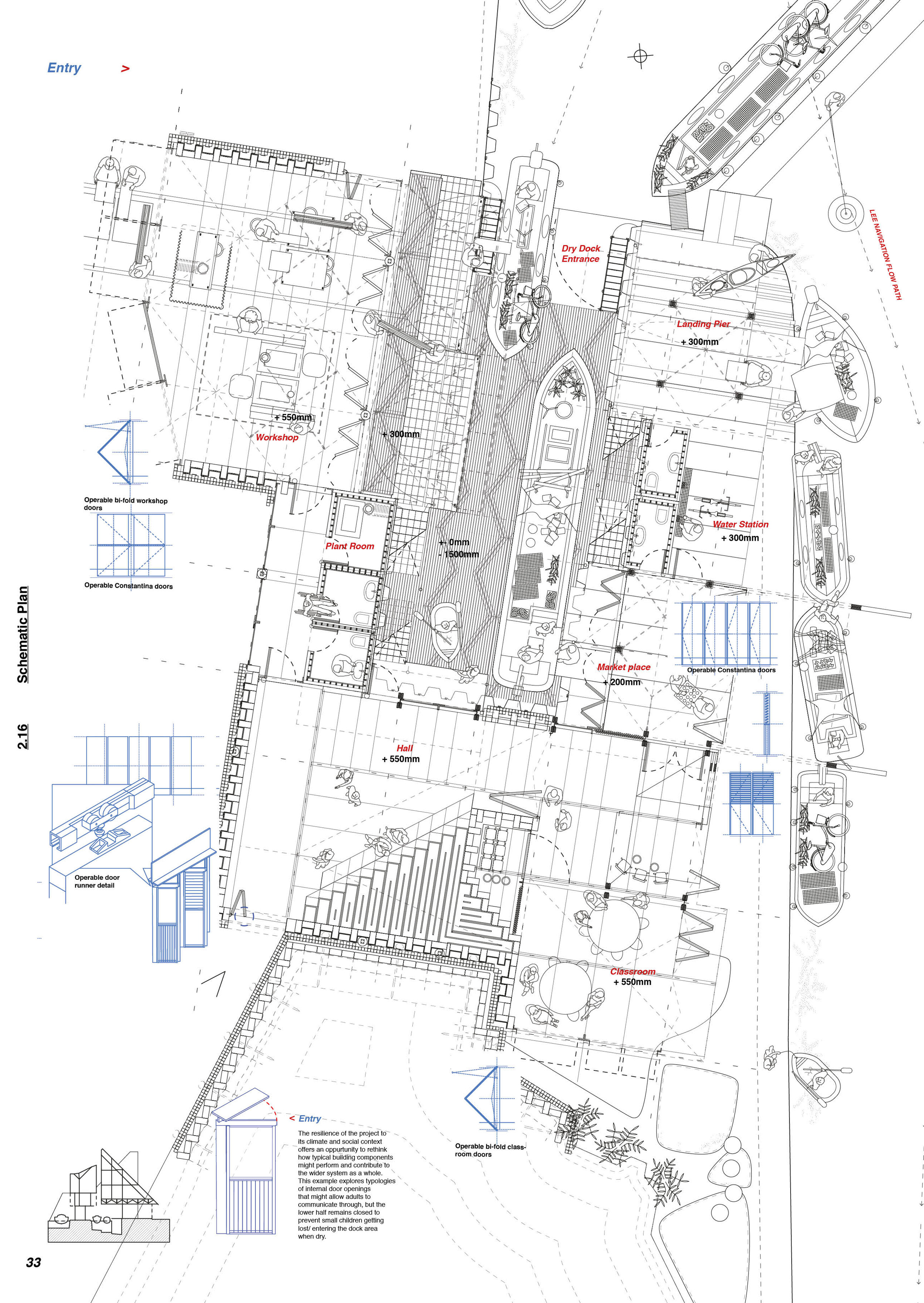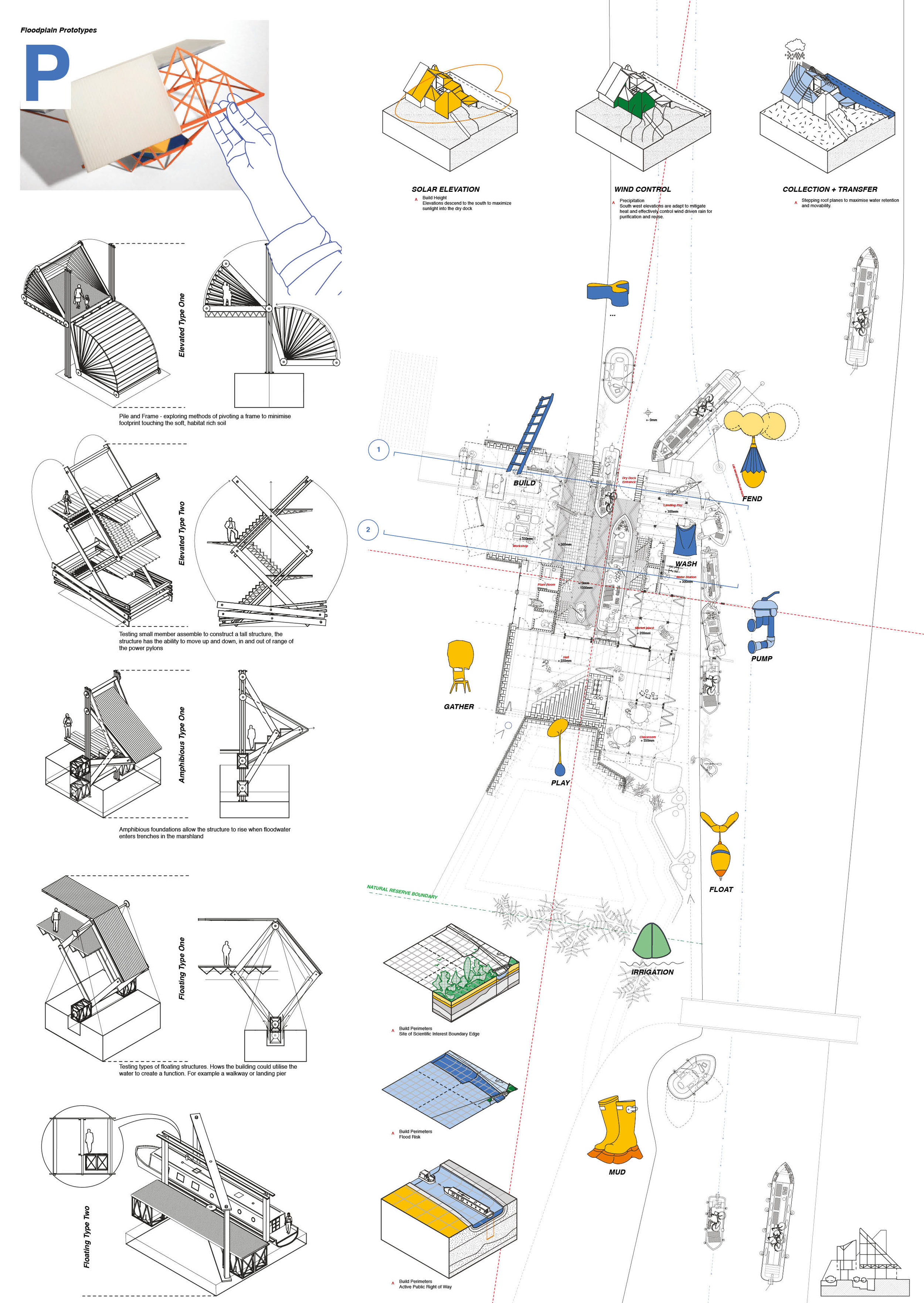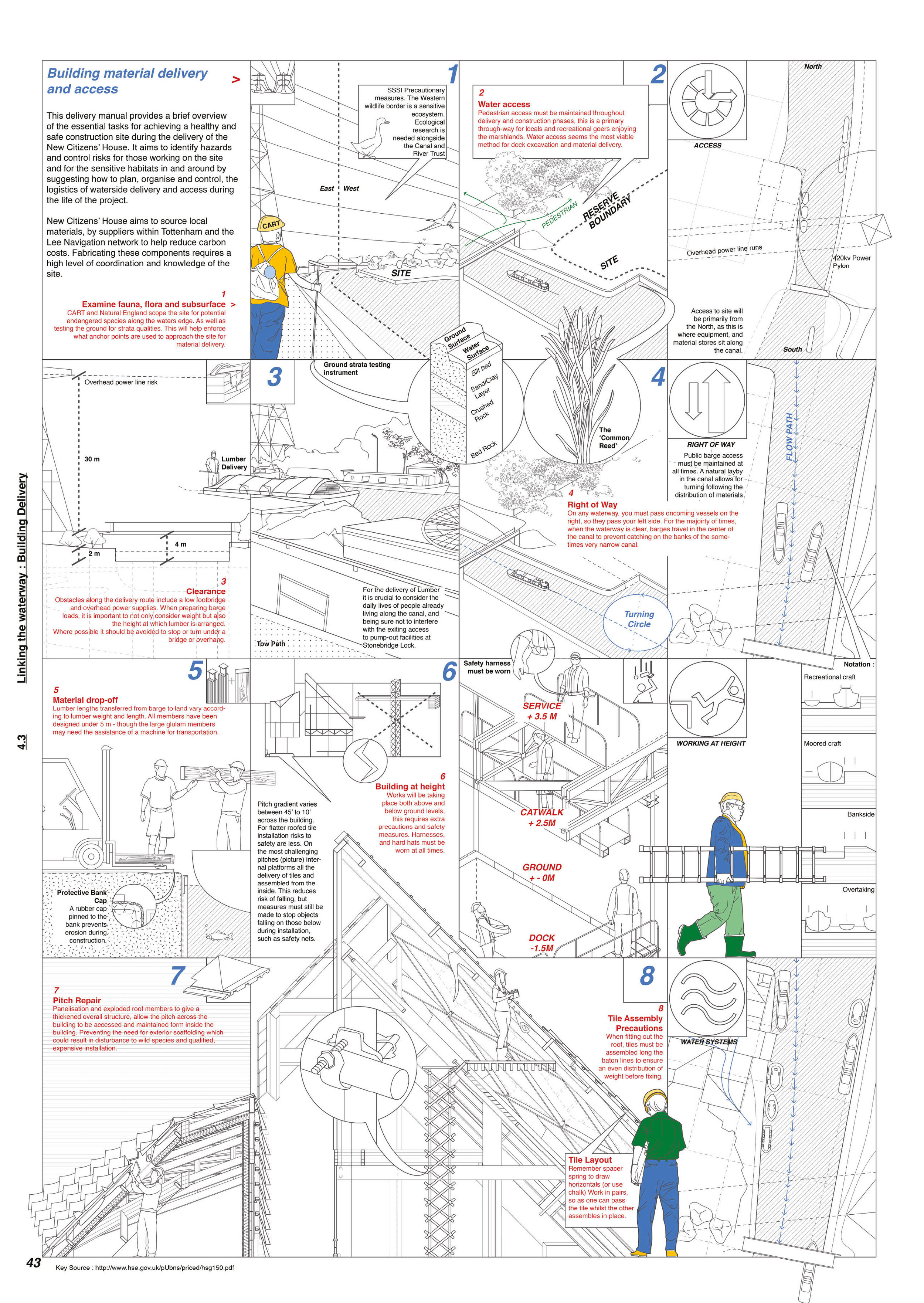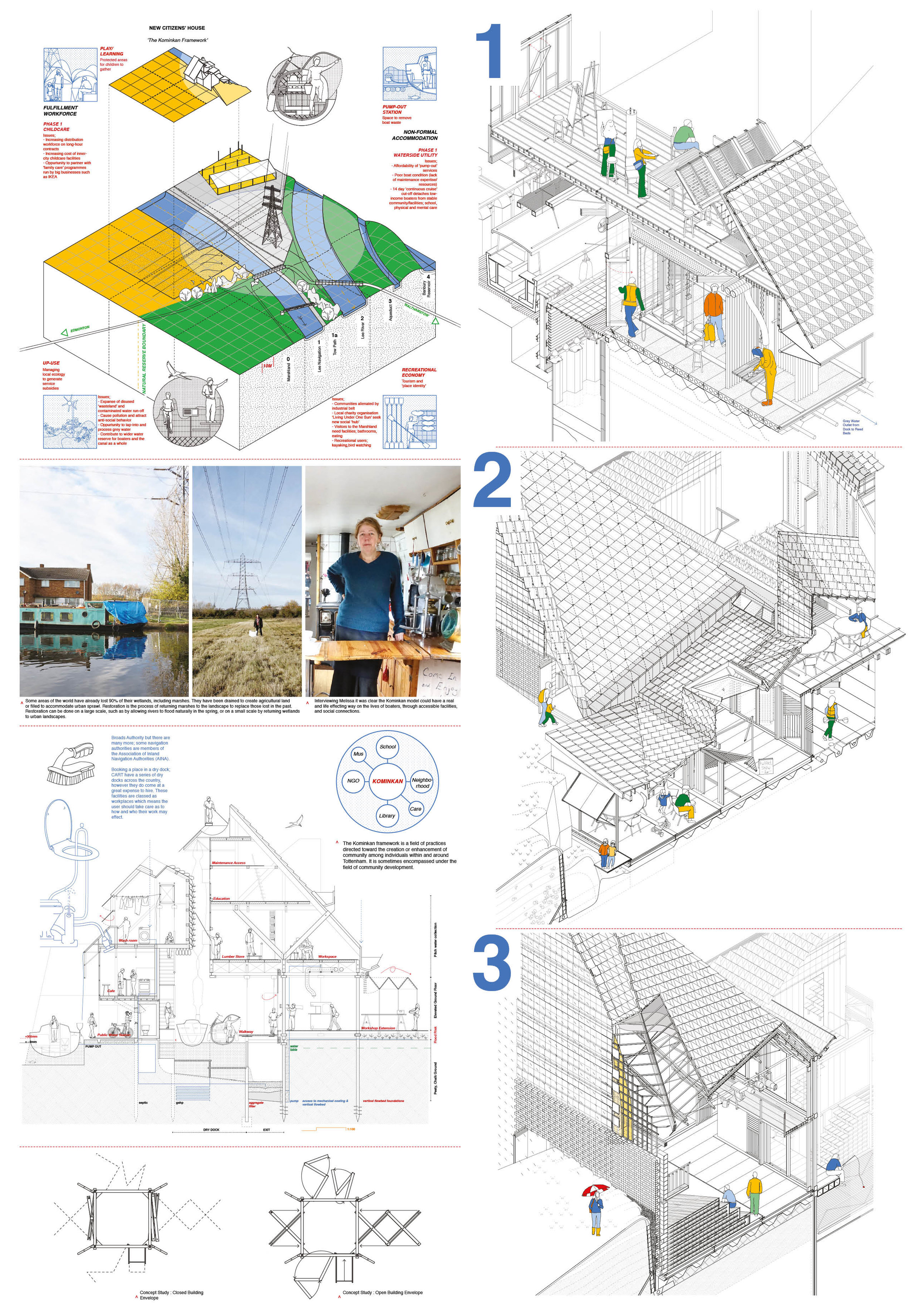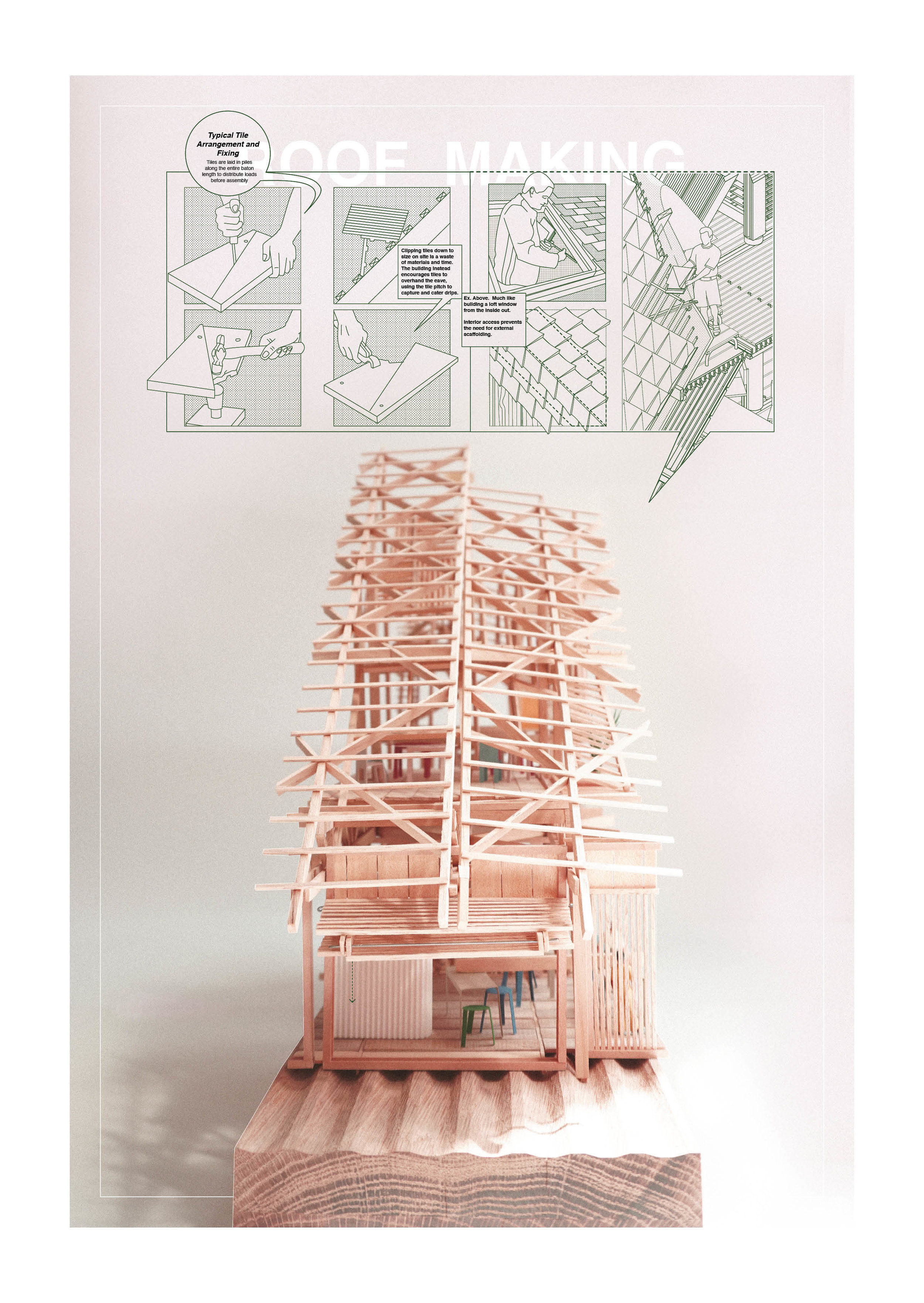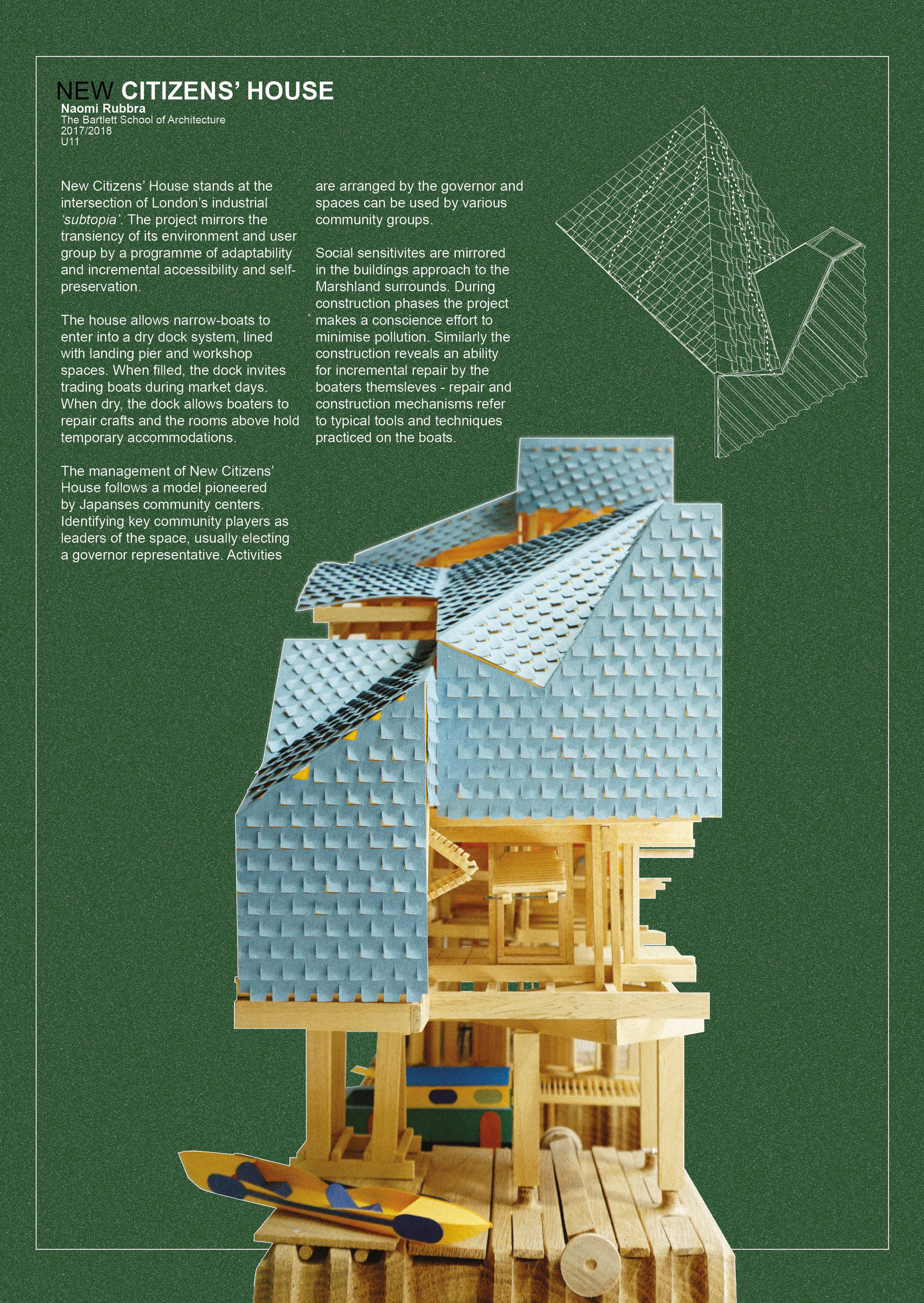Naomi Rubbra Y4
New Citizens House. Tottenham’s marshland in North London, like many physical urban fringes, epitomises Ian Nairns’ Subtopia (1955) as a place of lost identity. The marshland is primarily defined by its axis on the city’s industrial grid and the medley of disparate, disused industrial land and waste sites of polluted run-off and rubble. This landscape raises the question: how do major ‘sites of transfer’, be it energy, water, produce or transit into central London, attempt to recapture the spirit of place and belonging?
The Lee is the primary waterway through Tottenham and projects the reality of uneven inner-city development and right to the city as more people are forced to reside there; many unable to afford permanent mooring status live under ‘continuous cruising’ terms. Inspired from conversations with those living and moving through the site, New Citizens’ House brings together Tottenham’s unique waterway and transient community and industry, in a collaborative scheme of co-creation and resourcefulness. Can the combination of facets, entering and leaving the site, be used to generate a space for multi-generational inclusion and provision?
A new type of subtopian architecture is proposed, with an equal focus on people and resources. The design forms as an extension of the narrowboat. A dry dock stands at the centre of the project, acting simultaneously as the arrival and departure for boaters, and an essential means to repair, trade, and congregate. Guided by quintessential mechanisms of canal technologies and water control, the building collects, filters and redistributes run-off and precipitation, both for use by visiting boaters and the wider community.
The project pivots around accumulative interactions by its users. Whether in-use during its lifetime (pre-empting damage and repair), to its very construction (strategies to fix the roof tiles from the inside-out). In its entirety, the work seeks to push the boundaries of architectural urban consciousness beyond the ‘inner’, to realign London policy and inclusion toward our most sensitive ‘outer’ communities and habitats. Maybe then we can begin to start to encourage thinking around peoples right to the city, and identity.



